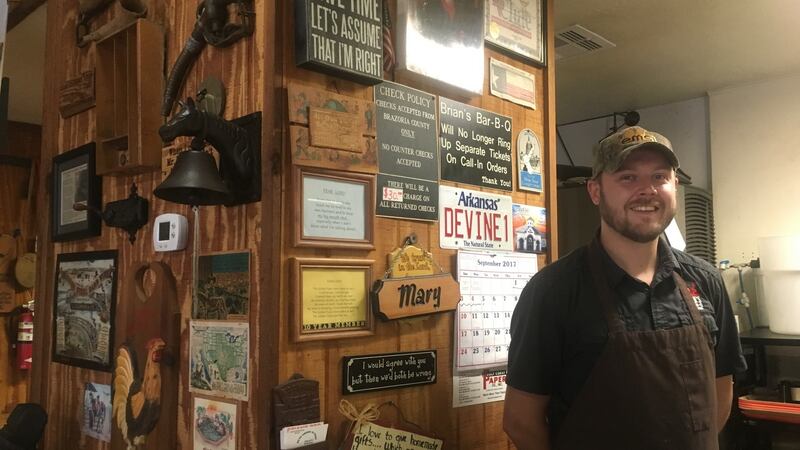As the southern states of Texas and Louisiana begin the painful recovery process from Hurricane Harvey, hundreds of miles east along the gulf coast residents of Florida are bracing themselves for Hurricane Irma. The storm, which has been brewing in the Atlantic for over a week, was upgraded to a category five hurricane on Tuesday by the National Hurricane Centre. Florida’s governor Rick Scott has declared a state of emergency.
The US territories of Puerto Rico and the Virgin Islands as well as large swathes of the Caribbean are expected to be hit as the hurricane moves through the islands south of America. Irma, which is registering winds of 290km/h (180mph), is expected to reach southern Florida at the weekend.
Further west on the southern coast of Texas, communities are trying to rebuild their lives and industries after the area was left devastated by Hurricane Harvey.
Driving south from Houston towards the Gulf of Mexico, the fields are waterlogged, while trees bend under the weight of the biggest rain storm to hit the region in half a century. A year’s worth of rain fell in less than a week in the greater Houston area and the region is still reeling.
Refineries
As I approach the Gulf of Mexico, hundreds of pylons and refineries appear on the horizon. Texas’s southern coast is the heart of the US energy industry, with trillions of barrels of oil pumping out each year from the various ports and shipping channels that dot the southern coast.
The concentration of oil and chemical plants in the area makes the southern Texan region particularly vulnerable to weather events.
Stepping out of the car at Port Freeport, one of several ports along Texas’s southern coast, the sea air mingles with the heavy scent of industry. Most of the plants and refineries in the south Texas region have reopened, having halted operations during the height of the storm. Up to a third of the US’s oil output was curtailed during Harvey, sending oil prices higher and squeezing supplies at filling stations.
Around the Port Freeport area and nearby Lake Jackson, where Dow Chemicals is one of the main employers, toxic gas was released at one plant after lightning struck, while further north, in Baytown, Exxon was forced to shut its plant – the second biggest in the country.
But most of the residents I speak to here are happy with the role played by the local chemical companies during the crisis, crediting them with putting drainage infrastructure in place.
At Brian’s BBQ in Clute, near Freeport, lunchtime trade is busy.
Although schools remain shut and thousands of houses have been emptied, many workers have returned to their jobs in the local chemical plants.
Meath man Ronan McEntee, who lives in the area with his wife and son, says business has been brisk since the hurricane struck, leaving much of the area under water.
“Apart from the first day after the storm, the BBQ has remained open and we’ve been busy feeding people in the area,” he says as he serves smoked brisket to customers.

While his own home was not flooded, many of the customers were not so lucky, with many hosting neighbours forced to evacuate their houses and a mandatory evacuation enforced in some areas. Talk this lunchtime is of flood insurance and recovery efforts as people swap stories over smoked barbecued ribs and sweetcorn.
As I finish lunch and drive back to Houston, piles of rubbish line the streets on the outskirts of this sprawling city. Many people who have abandoned their homes have left their damaged furniture on the street to be collected. Piles of debris dry in the heavy Texan heat.
Pollution risks
The Environmental Protection Agency has warned that pollution risks remain high. Concern is rising about possible contamination at several of the city’s “superfund” sites, decades-old toxic waste sites which authorities have been unable to inspect since Harvey hit.
Southeast of the city I speak to David and Sally Wheeler. Both medics, they have lived in their home for 35 years. It was flooded during Hurricane Harvey after the nearby bayou overflowed. They have spent the past few days trying to salvage possessions which now sit outside their front porch along with broken furniture, drying in the sun.
Inside, the ground floor of the house has been completely gutted. They have been staying with neighbours and friends for the past few days, and on Tuesday David returned to work for the first time since the storm hit.
“We have lived here for 35 years and this is the first time we have been flooded. I’ve never seen anything like it,” says Sally as she stands amid the debris, trying to put some order on the pile of possessions gathered on her front lawn.
For families such as the Millers, Harvey may have left, but the destruction it has left in its path will take many months to heal. For others in the southeast corner of the country, the devastation may be just beginning.











